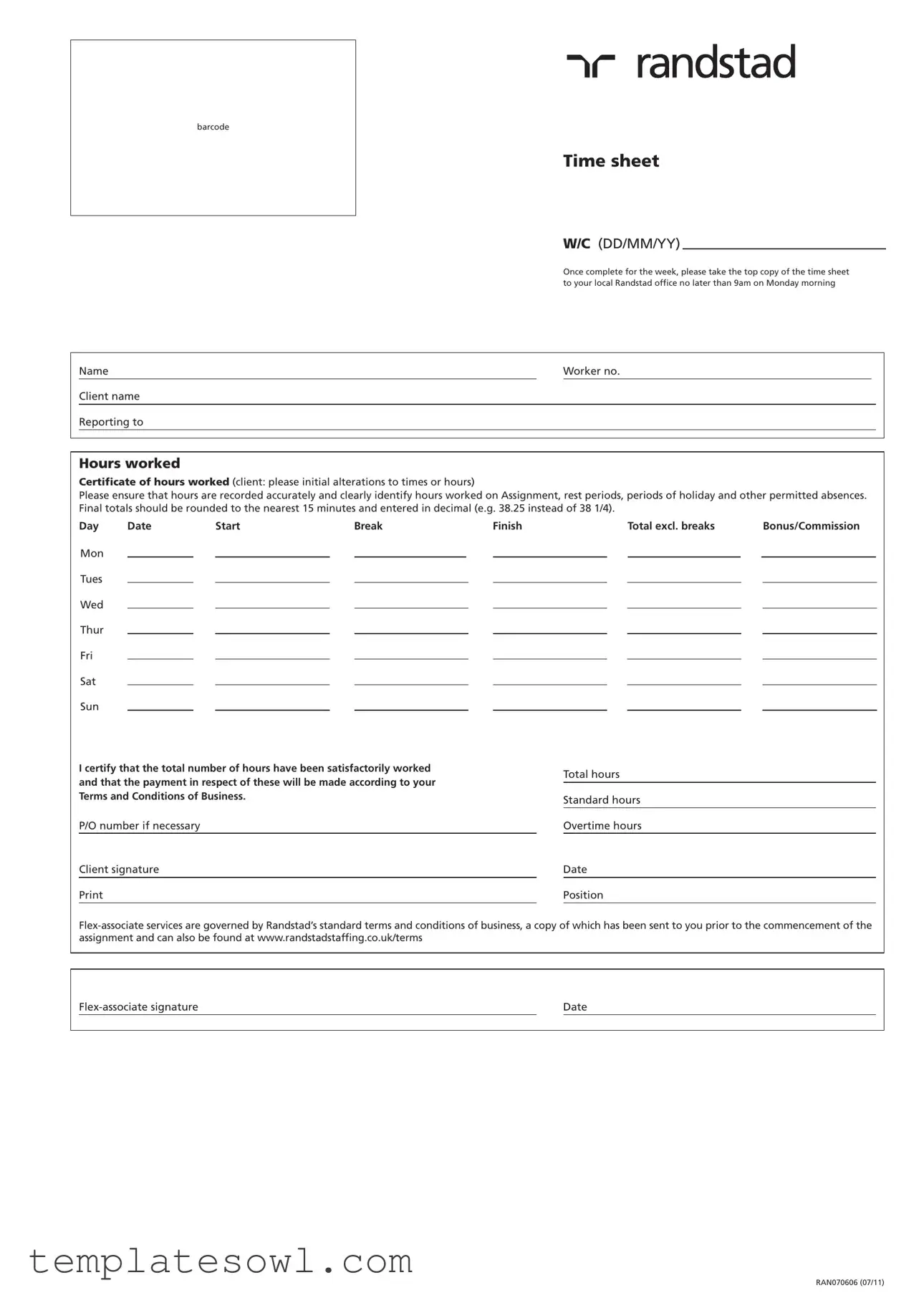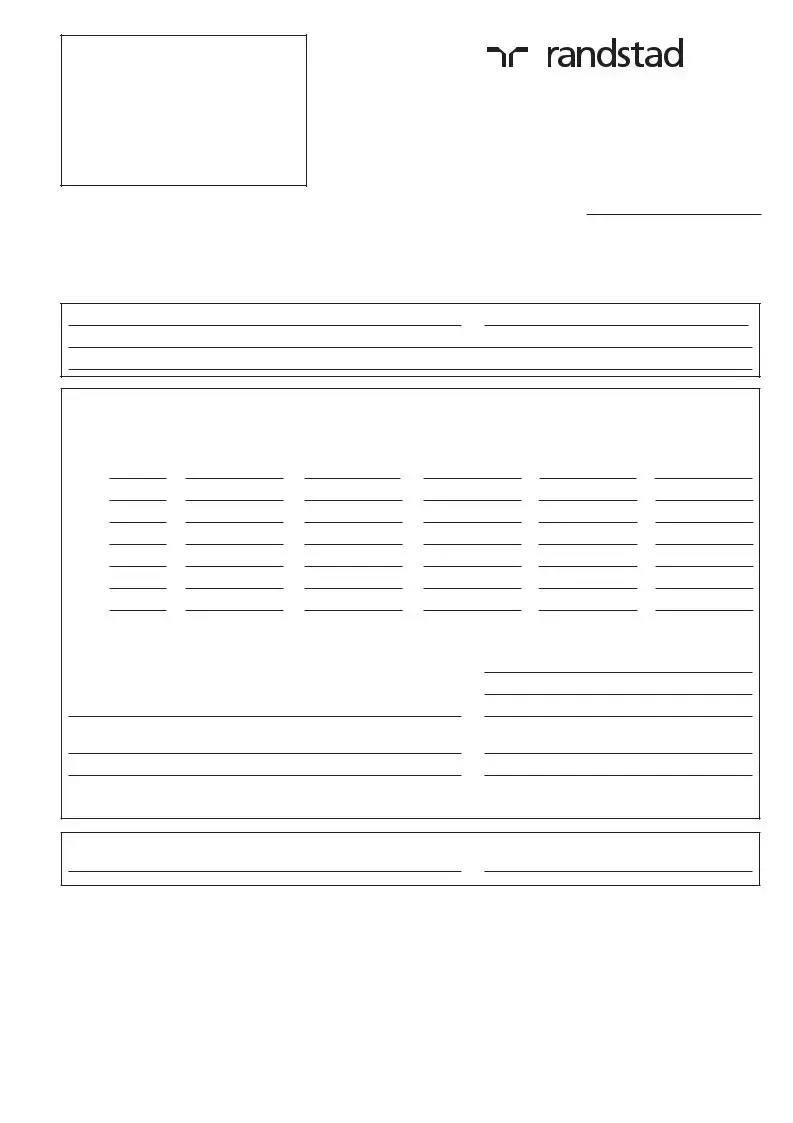Completing the Randstad Time Sheet form accurately is crucial for timely payment and proper record-keeping. However, there are common mistakes that individuals often make. Here are seven of those mistakes to watch for when filling out the time sheet.
One frequent error is failing to write the dates clearly. Since the form requires specific dates for each day of the week, it's important to ensure that the date format is correct. Using the format DD/MM/YY helps avoid confusion. Inaccurate dates can lead to delayed processing or even payment issues.
Another mistake is neglecting to specify the hours worked accurately. The time sheet requires a breakdown of hours, including start times, finish times, and breaks. Leaving out any pertinent details can result in discrepancies and potential complications. It is essential to document everything clearly to support your time claims.
Many people round their total hours improperly. The instructions ask for totals to be rounded to the nearest 15 minutes and expressed in decimal format. For instance, 38 1/4 should be reported as 38.25. Incorrect rounding could lead to underpayment or overpayment, which can cause future issues.
Additionally, individuals sometimes fail to record breaks properly. Breaks, rest periods, and holiday durations must be indicated clearly. Omitting this essential information can alter total hours worked and may result in incorrect payment. Always account for breaks when calculating total work hours.
Not obtaining the required initials from the client can also create problems. The form stipulates that any alterations to the recorded times or hours must be initialed by the client. Failing to do so may lead to disputes later. It’s best to ensure that the form is finalized with all necessary signatures and initials.
People also occasionally forget to certify the total hours worked by signing the appropriate section. The certification validates that the figures provided are accurate. This step serves to assure both parties that the hours reported are correct. Without this certification, payment may be delayed.
Lastly, failing to submit the completed form on time can lead to unnecessary complications. The time sheet must be brought to the local Randstad office no later than 9 a.m. on Monday morning following the week worked. Missing this deadline may result in a delay in payment, causing frustration for everyone involved.
By being aware of these common mistakes and taking steps to avoid them, individuals can streamline their time-sheet submissions, ensuring accurate and timely payments.

